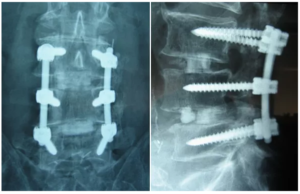Scoliosis Surgery Readmission Rates and Costs

A Study in Spine by Martin et.al. examined risk factors associated with 30-day and 90-day unplanned hospital re-admissions after pediatric spinal deformity surgery.
1. The 30-day readmission rate was 4.7 percent and the 90-day re-admission rate was 6.1 percent.
2. Infections were the most common reason for re-admissions, accounting for 38 percent of the 30-day re-admissions and 33 percent of the 90-day re-admissions. Wound-dehiscence accounted for 19 percent of the 30-day re-admissions and 17 percent of the 90-day re-admissions.
3. Pulmonary complications accounted for 12 percent of 30-day re-admissions and 13 percent of 90-day re-admissions.
4. Predictors of 30-day re-admissions include:
• Male sex
• Neuromuscular or congenital scoliosis
• Scheuermann kyphosis
• Medicaid
• Length of stay less than three days or longer than six days
• Surgery at a teaching hospital
A new study published in the JBJS examines 659 patients who underwent adult spinal deformity surgery and looks at how readmissions increase the total cost of spinal deformity surgery.
1. Readmission rates were 24% overall, and cost around $10 million total with an average of $15K per patient.
2. Around 8.8 percent of the admissions occurred within the first 30 days after surgery, accounting for $3.2 million, and 11.7 percent of the readmissions occurred within the first 90 days, accounting for $4.6 million.
3. Pseudarthrosis was the most expensive readmission, costing around $93K; infections and kyphosis were also expensive readmissions, costing around $75K and $67K respectively.
4. Two years after surgery, the average readmission cost was $86,081.
5. The factors associated with increased risk for readmission include: Older age; Eight or more levels fused; Longer length of stay in hospital.
Authors concluded that adult spinal deformity surgery is unique, because the most common and most expensive complications occur after one year.
